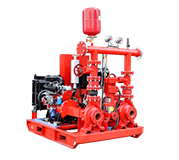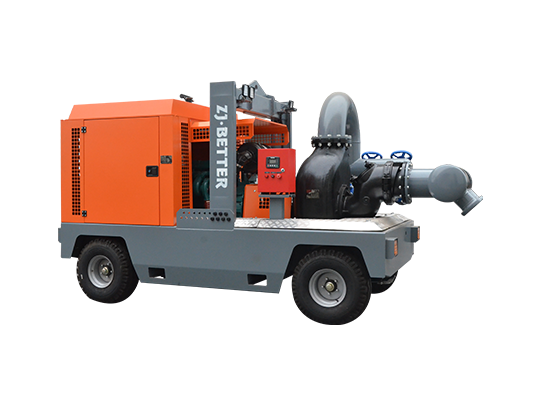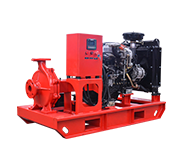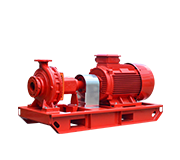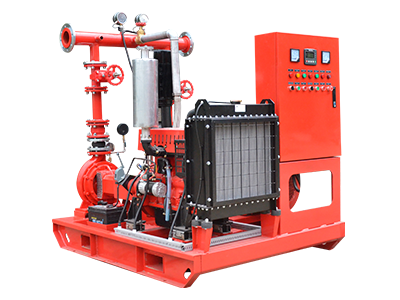- Fire Pump System
-
- UL-Listed Fire Pump SetEDJ End Suction Fire Pump SetEDJ Fire Pump SetEJ Small Flow Fire Pump SetFire Pump PackagesContainerized fire pump setDiesel Fire Pump SetED Small fire pump setElectric Jockey Fire Pump SetFire Pump Set with Jockey PumpFire Pump SystemSplit Case Fire Pump SetMutistage EDJ Fire Pump SetDiesel Fire Pump Set with Jockey PumpFire Fighting Pump SystemElectric Diesel Jockey Fire Pump SetFire Fighting Pump Set with Jockey PumpSmall Capacity Electric Fire Pump SetDJ Fire Pump Set with Jockey PumpEJ Fire Pump SetED Fire Pump Set (Electric+Diesel pump)Diesel Engine Fire Pump SetDiesel Fire Jockey PumpSmall Fire Pump SetEDJ Fire Pump SystemFire Water Pump SetFire Pump AssemblyDJ Small Flow Fire Pump SetCummins Engine Fire Pump Set
- Mobile Pump Unit
-
- Split Case Series Mobile Pump TruckSelf Priming Series Mobile Pump TruckCentrifugal diesel driven dewatering pumps open frame trailerFlow-mixing Mobile Pump TruckFlow-mixing Mobile Pump TruckManure Pump TruckP12 modle mobile Pump truckP10 Modle Mobile Pump Truck1000m³Self Priming Series Mobile Pump TruckLarge Flow Non-Clogging Mobile Fire Pump TrailerTrailer Mounted Fire PumpFire Emergency Mobile Pump TruckDiesel Engine Emergency Mobile Trailer Pump
- Diesel Fire Pump
-
- UL Listed Diesel End Suction Fire PumpXBC-S Diesel Split Case Fire PumpXBC-IS Diesel End Suction Fire PumpXBC-D Diesel Multistage Fire PumpVertical Turbine Diesel Engine Fire PumpDiesel Engine Single-Stage Centrifugal PumpXBC-IS Diesel End Suction Fire Fighting PumpXBC-S Diesel Engine Split Case Fire PumpDiesel Engine End Suction Fire PumpXBC-IS Diesel End Suction Fire PumpsZWC Diesel Engine Self Priming Pump for IrrigationDiesel Engine End Suction Fire Fighting PumpXBC-S Heat Exchange Diesel End Suction Fire PumpXBC-XA Diesel Engine End Suction Fire PumpXBC-IS Diesel Engine Fire PumpDiesel Engine End Suction Fire PumpXBC-IS Diesel Engine End Suction Fire PumpXBC-ISO Diesel Fire Fighting PumpPortable Fire PumpFire Booster Pump

Email: zjbetter@119pump.com
Tel:+86 15336708022(Gloria) +86 13306708055 (Ivy) +86 13357006058 (Serena) +86 13357022877 (Wendy) +86 17757009882(Kate)
Fax:0086-570-3010238
-
What are the common causes of fire pump failure during an emergency?
Common causes include power supply issues, mechanical failures, improper maintenance, and incorrect installation. Regular testing and adherence to maintenance schedules are crucial to prevent failures.
View more +
-
How do fire pumps support fire protection in underground facilities?
Fire pumps for underground facilities, such as mines or subways, must provide reliable water pressure despite the depth and complex layout. They should be robust and capable of functioning in potentially harsh underground conditions.
View more +
-
How do fire pumps support fire protection in underground facilities?
Fire pumps for underground facilities, such as mines or subways, must provide reliable water pressure despite the depth and complex layout. They should be robust and capable of functioning in potentially harsh underground conditions.
View more +
-
How do fire pumps support fire protection in underground facilities?
Fire pumps for underground facilities, such as mines or subways, must provide reliable water pressure despite the depth and complex layout. They should be robust and capable of functioning in potentially harsh underground conditions.
View more +
-
How do fire pumps support fire protection in underground facilities?
Fire pumps for underground facilities, such as mines or subways, must provide reliable water pressure despite the depth and complex layout. They should be robust and capable of functioning in potentially harsh underground conditions.
View more +
-
How do fire pumps support fire protection in underground facilities?
Fire pumps for underground facilities, such as mines or subways, must provide reliable water pressure despite the depth and complex layout. They should be robust and capable of functioning in potentially harsh underground conditions.
View more +
-
How do fire pumps support fire protection in underground facilities?
Fire pumps for underground facilities, such as mines or subways, must provide reliable water pressure despite the depth and complex layout. They should be robust and capable of functioning in potentially harsh underground conditions.
View more +
-
How do fire pumps support fire protection in underground facilities?
Fire pumps for underground facilities, such as mines or subways, must provide reliable water pressure despite the depth and complex layout. They should be robust and capable of functioning in potentially harsh underground conditions.
View more +
-
How do fire pumps contribute to environmental sustainability in building design?
Fire pumps can contribute to environmental sustainability by using energy-efficient motors, reducing water wastage through precise control systems, and integrating with renewable energy sources. Sustainable fire protection systems can be part of a broader green building strategy.
View more +
-
What factors influence the selection of a fire pump?
Factors include the building size, height, occupancy type, local fire codes, water supply source, and the required water flow and pressure. A thorough hydraulic analysis is typically performed to determine the appropriate pump size and type.
View more +
-
What standards govern the installation and maintenance of fire pumps and jockey pumps?
The installation and maintenance of fire pumps and jockey pumps are governed by standards such as NFPA 20 (Standard for the Installation of Stationary Pumps for Fire Protection) and NFPA 25 (Standard for the Inspection, Testing, and Maintenance of Water-Based Fire Protection Systems).
View more +
-
How do fire pumps integrate with energy storage systems?
- Protection of Battery Storage: Ensuring fire protection systems are designed to handle fires involving energy storage batteries. - Integration with Renewable Energy Systems: Coordinating with renewable energy sources such as solar and wind. - Real-Time Monitoring and Control: Providing real-time monitoring and control for fire protection in energy storage facilities. - Compliance with Energy Storage Standards: Adhering to fire safety regulations specific to energy storage systems.
View more +
-
What are the considerations for fire pump systems in sports arenas and stadiums?
- High Occupancy and Safety: Ensuring systems can handle the large crowds and provide efficient evacuation routes. - Comprehensive Coverage: Providing fire protection for seating areas, concourses, locker rooms, and other facilities. - Integration with Event Safety Systems: Coordinating with event safety and security systems for a cohesive safety strategy. - Compliance with Sports Venue Safety Standards: Adhering to fire safety regulations specific to sports arenas and stadiums.
View more +
-
What are the considerations for fire pump systems in high-tech manufacturing facilities?
- Protection of Sensitive Equipment: Ensuring fire protection systems do not damage high-tech and sensitive manufacturing equipment. - Clean Room Compatibility: Designing systems that are compatible with clean room environments. - Integration with Manufacturing Processes: Coordinating with high-tech manufacturing processes to avoid operational disruptions. - Compliance with High-Tech Industry Standards: Adhering to fire safety regulations specific to high-tech manufacturing.
View more +
-
How do fire pumps support fire protection in shipping and maritime industries?
- Marine-Grade Materials: Using materials that can withstand the corrosive marine environment. - Integration with Ship Safety Systems: Coordinating with onboard safety systems for comprehensive fire protection. - High Capacity Systems: Providing high-capacity systems to handle fires on large ships and offshore platforms. - Compliance with Maritime Safety Standards: Adhering to fire safety regulations specific to the shipping and maritime industries.
View more +
-
What are the considerations for selecting electric fire pumps for high-temperature environments?
Considerations include: Heat-resistant materials: Using materials that can withstand high temperatures without degrading. Cooling systems: Implementing effective cooling systems to manage motor and pump temperatures. Ventilation: Ensuring proper ventilation in the pump room to dissipate heat. Insulation: Using thermal insulation to protect sensitive components from heat. Regular monitoring: Continuously monitoring temperatures to prevent overheating and potential failures.
View more +
-
How do you ensure electric fire pumps are compliant with environmental regulations?
Ensuring compliance involves: Understanding regulations: Staying informed about local, national, and international environmental regulations. Eco-friendly materials: Using environmentally friendly materials and components. Energy efficiency: Selecting high-efficiency motors and controls to minimize energy consumption. Emissions control: Ensuring that the pump produces no harmful emissions. Documentation: Keeping detailed records of compliance efforts and certifications.
View more +
-
How do fire pumps support fire protection in educational institutions?
- Comprehensive Campus Coverage: Providing fire protection for classrooms, dormitories, labs, and common areas. - High Occupancy and Safety: Ensuring systems can handle high occupancy and prioritize student and staff safety. - Integration with Security Systems: Coordinating with campus security systems for enhanced safety. - Compliance with Educational Fire Safety Codes: Adhering to fire safety regulations specific to schools, colleges, and universities.
View more +
-
How do fire pumps integrate with health and safety management systems?
- Centralized Monitoring: Providing centralized monitoring and control through health and safety management systems. - Real-Time Alerts and Responses: Enabling real-time alerts and automated responses to fire incidents. - Data Collection and Analysis: Using data collection for compliance reporting and performance optimization. - Compliance with Occupational Health and Safety Standards: Adhering to fire safety regulations and standards for workplace health and safety.
View more +
-
How do fire pumps support fire protection in large-scale public events?
- Temporary Installation: Providing portable and flexible fire protection systems that can be quickly set up for events. - High Capacity and Reliability: Ensuring systems can handle the large crowds and potential fire hazards at public events. - Coordination with Emergency Services: Working closely with local emergency services to ensure rapid response capabilities. - Compliance with Event Safety Standards: Adhering to fire safety regulations and guidelines for large public gatherings.
View more +
-
How do fire pumps support fire protection in large residential estates and gated communities?
- Comprehensive Coverage: Providing comprehensive fire protection for large residential areas and common facilities. - High Capacity Systems: Ensuring systems can deliver adequate water supply for extensive residential estates. - Integration with Security Systems: Coordinating with security systems to enhance overall safety. - Compliance with Residential Fire Safety Codes: Adhering to fire safety regulations and codes specific to large residential estates.
View more +
-
What are the considerations for fire pump systems in mixed-use skyscrapers?
- High Pressure and Capacity: Ensuring systems can deliver high-pressure water supply to all floors. - Integration with Building Systems: Coordinating with other building systems, such as HVAC and emergency lighting. - Flexible Design: Providing flexible design options to accommodate the mixed-use nature of the building. - Compliance with High-Rise Building Codes: Adhering to fire safety regulations and codes specific to high-rise mixed-use buildings.
View more +
-
How do fire pumps integrate with water conservation initiatives?
- Water-Efficient Technologies: Implementing water-efficient fire suppression technologies to minimize water usage. - Recycling and Reuse: Using systems that support the recycling and reuse of water. - Sustainable Design: Ensuring the overall system design aligns with water conservation goals. - Compliance with Environmental Standards: Adhering to environmental regulations and standards for water conservation.
View more +
-
What are the considerations for fire pump systems in telecommunications facilities?
- Protection of Sensitive Equipment: Ensuring fire protection systems do not damage sensitive telecommunications equipment. - Redundant Systems: Implementing redundant fire protection systems to ensure continuous operation. - Integration with Security Systems: Coordinating with security systems to enhance overall facility protection. - Compliance with Telecom Standards: Adhering to fire safety regulations specific to telecommunications facilities.
View more +
-
How do fire pumps support fire protection in hazardous material storage facilities?
- Specialized Fire Suppression Systems: Implementing systems specifically designed to handle hazardous materials. - Explosion-Proof Components: Using explosion-proof components to prevent ignition. - Regular Training and Drills: Conducting regular training and drills to ensure staff are prepared for emergencies. - Compliance with Hazardous Material Regulations: Adhering to stringent regulations and standards for hazardous material storage.
View more +

